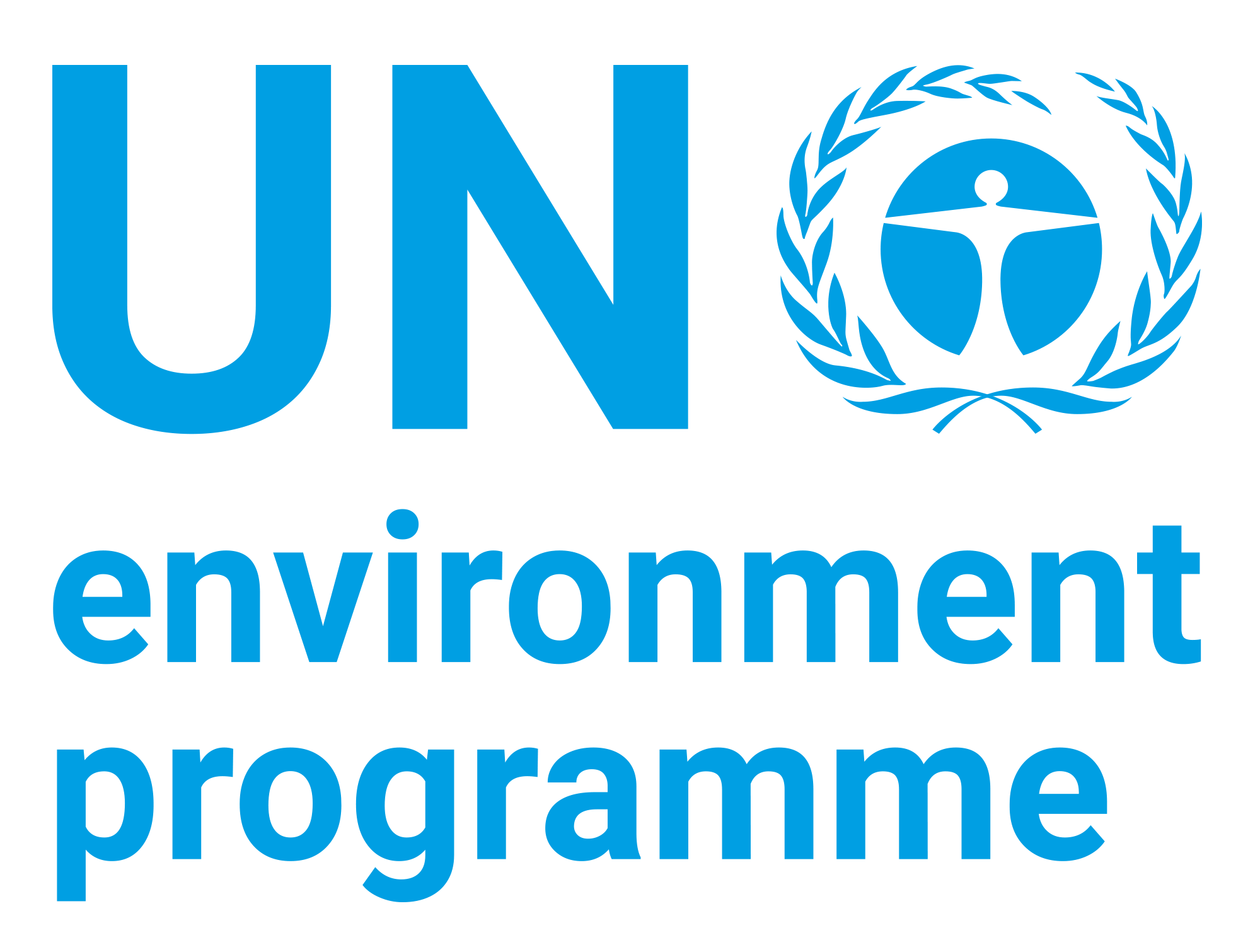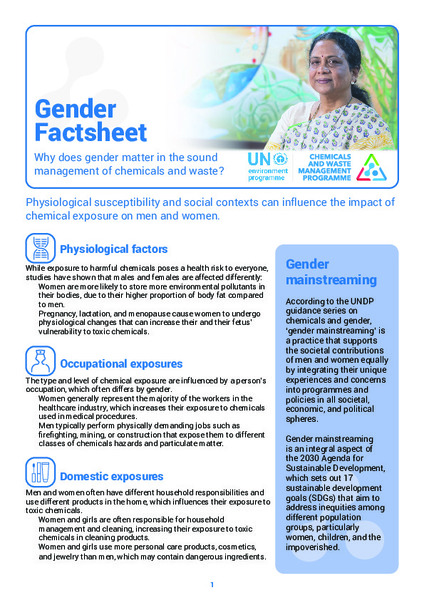| dc.contributor | Industry and Economy Division | en_US |
| dc.contributor.author | United Nations Environment Programme | en_US |
| dc.coverage.spatial | India | en_US |
| dc.coverage.spatial | Lesotho | en_US |
| dc.coverage.spatial | Mongolia | en_US |
| dc.date.accessioned | 2025-01-28T12:07:27Z | |
| dc.date.available | 2025-01-28T12:07:27Z | |
| dc.date.issued | 2025-01-28 | |
| dc.date.submitted | 2025-01-28 | |
| dc.identifier.uri | https://wedocs.unep.org/20.500.11822/46923 | |
| dc.description | Physiological susceptibility and social contexts can influence the impact of chemical exposure on men and women. | en_US |
| dc.format | pdf | en_US |
| dc.language | English | en_US |
| dc.subject | gender mainstreaming | en_US |
| dc.subject | harmful product | en_US |
| dc.subject | waste management | en_US |
| dc.subject | chemical | en_US |
| dc.title | Gender Factsheet: Why does gender matter in the sound management of chemicals and waste? | en_US |
| dc.type | Factsheets, Infographics and Brochures | en_US |
| wd.identifier.sdg | SDG 3 - Good Health and Well-Being | en_US |
| wd.identifier.sdg | SDG 5 - Gender Equality | en_US |
| wd.topics | Chemicals and Pollution Action | en_US |
| wd.identifier.pagesnumber | 2 p. | en_US |


